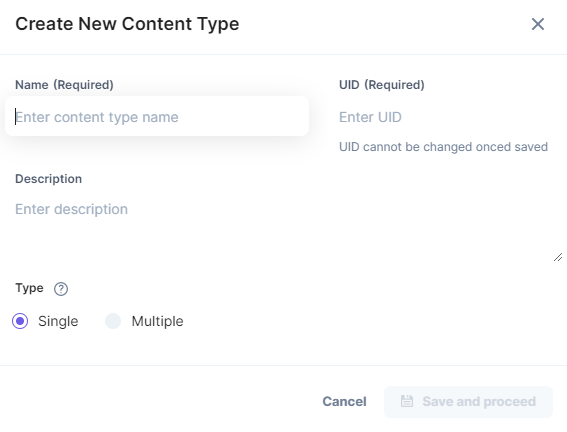Was this article helpful?
Thanks for your feedback
Irrespective of the type of content type (“Webpage” or “Content Block”) you are creating, you should mark it as either Single or Multiple. “Single” lets you create a single entry using the content type, while “Multiple” lets you create more than one entry of the same structure.

To create one-off pages that have unique content structure, you need to mark the content type as Single. So, for instance, to create a homepage of a website, you will create a Webpage content type, and mark it as Single. This is because a website only has one homepage. Other example pages would be:
To create a header of a website, you need to create a Content Block content type, and mark it as Single. Other example pages of “Single Content Block” content type would be:
To create multiple entries using the same content type, you need to mark that content type as Multiple. You can use this kind of content type to create streams of similar content. So, for instance, if you create a “News” content type, you can create multiple news entries for your site using the same content type.
To understand this concept clearly, let’s consider two examples:
Was this article helpful?
Thanks for your feedback